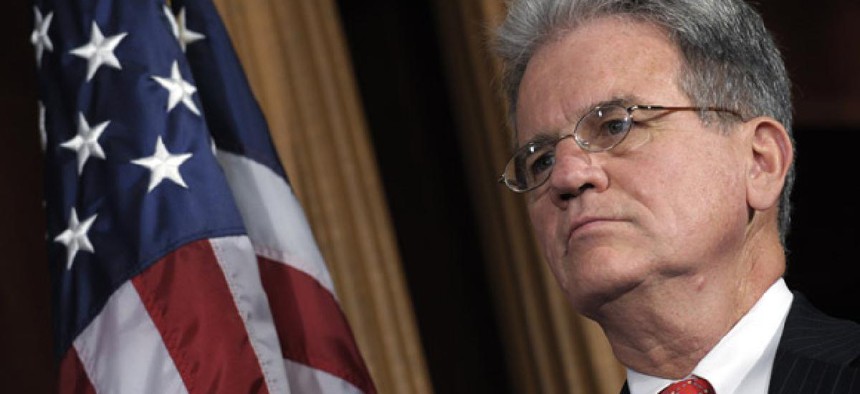OMB defends its progress weeding out federal websites
Sen. Tom Coburn releases CRS analysis of the White House’s Campaign to Cut Waste.
The Office of Management and Budget is rebutting a charge from Sen. Tom Coburn, R-Okla., that the Obama administration has fallen short on its promises to eliminate obsolete agency websites as part of its Campaign to Cut Waste.
On June 7, Coburn asked the Congressional Research Service to examine the administration’s progress on the anti-waste campaign launched with some fanfare in June 2011 by Vice President Joe Biden. The plan, built on an executive order from President Obama, set up a new Government Accountability and Transparency Board and promised regular Cabinet-level attention to press for such cost-cutting moves as selling excess properties, using data to combat fraud and taking down outmoded agency websites.
CRS replied to Coburn on June 12 in a
Specifically, CRS said the administration’s Data.gov website showed that 300 obsolete federal Internet domains had been taken down, from a baseline of 1,759 federal websites. Coburn noted in a June 13 posting on his own website, that was “at least 579 short of reaching their goal of cutting the number of websites in half.”
The Obama administration countered that some 600 Web domains have been “identified for elimination,” but acknowledged “there is still more work to be done,” in a response emailed to Government Executive from White House Communications Director Kenneth Baer, who recently announced he is leaving his post.
“Agencies are continuing to drive further efforts to eliminate unnecessary dot-gov domains and at the same time enable Americans to access the information and services of the federal government more easily than ever before,” he said.
The administration’s “no new domain” policy for agencies is intended help build a federal Web presence geared toward the needs of citizens rather than according to the ways in which government is organized, OMB has said.
Baer said the campaign against inefficient and unnecessary spending has reduced costs by “tens of billions of dollars” in such areas as contracting, combating fraud, selling off federal real estate and shutting federal data centers.
In requesting the study from CRS, Coburn asked for indicators of administration follow-up in its Campaign to Cut Waste. The reply notes Biden held two Cabinet meetings to discuss agency progress and OMB, as planned, issued continuing guidance in memos in August 2011 and February 2012.
Possible shortfalls CRS mentioned include an absence of quarterly metric updates on Performance.gov, a lack of monthly reports on progress from agency chief financial officers, and an absence of reporting on agency progress toward meeting “priority goals” as called for under the 2010 Government Performance Results Modernization Act.
CRS noted the funding for Performance.gov has been cut and “implementation of administrative initiatives may be difficult to track over time in the absence of statutory requirements for certain kinds of transparency or reporting” -- a limitation that affected management performance initiatives under both the Obama and George W. Bush administrations.
NEXT STORY: Cyber Summer Camp




